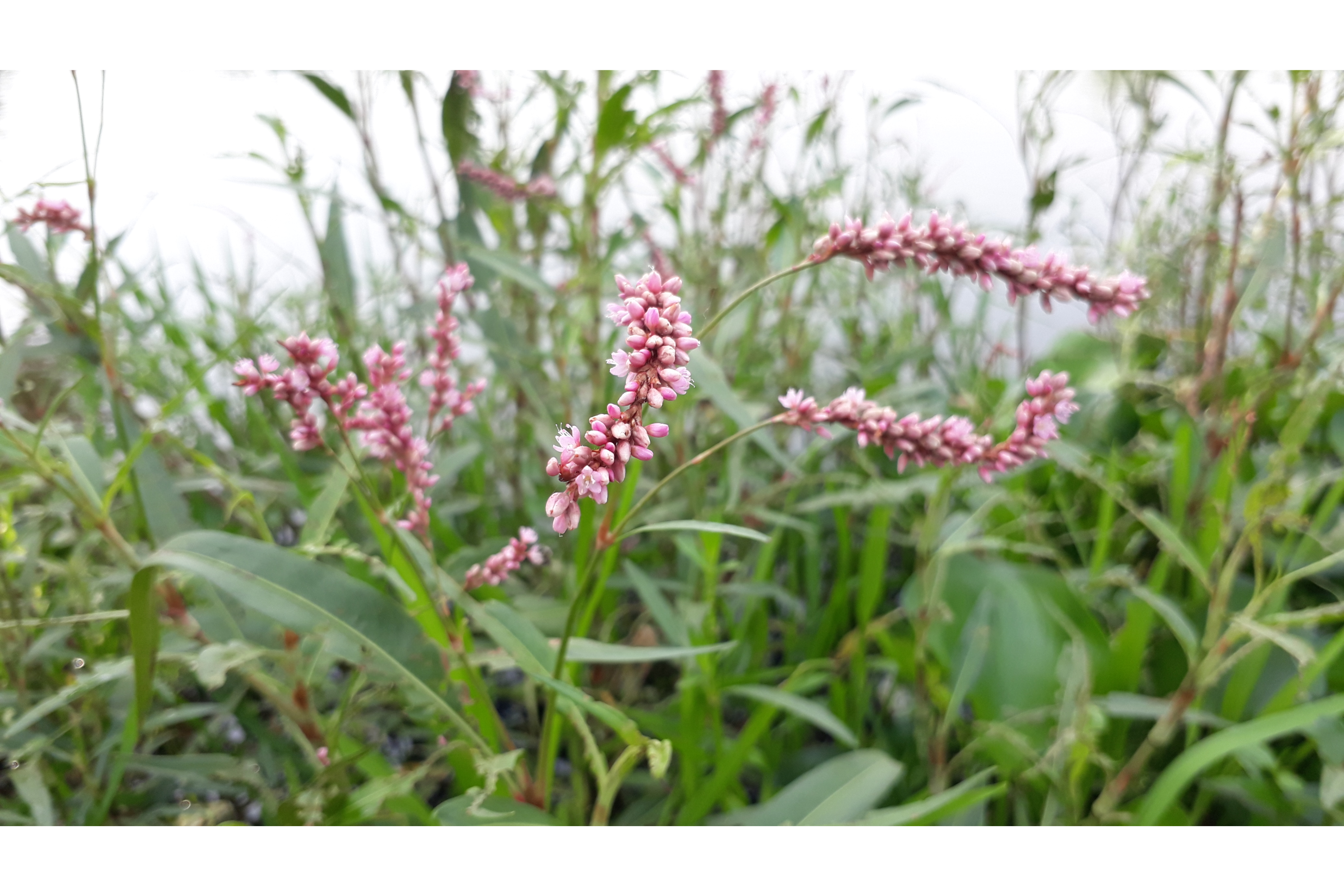Pennsylvania smartweed
(Persicaria pensylvanica)

Description
Persicaria pensylvanica is a species of flowering plant in the buckwheat family, Polygonaceae. It is native to parts of North America, where it is widespread in Canada and the United States. It has also been noted as an introduced species in parts of Europe and South America. Common names include Pennsylvania smartweed and pinkweed. Pennsylvania smartweed is a variable annual herb reaching 10 cm (3.9 in) to 2 m (6.6 ft) tall. The upright, ribbed stems are branching or unbranched. The lance-shaped leaves reach up to about 2 cm (0.79 in) in length. The blade may be marked with a dark blotch. The brownish ochrea at the base is up to 2 cm (0.79 in). The inflorescences grow at the top of the stem and from the leaf axils. The flowers have five pinkish or greenish tepals each a few millimeters long. This plant grows in moist, disturbed habitat types, such as ponds, reservoirs, riverbanks, irrigated fields, and ditches. This plant is an important part of the habitat for waterfowl and other birds, which use it for food and cover. At least 50 species of birds have been observed feeding on the seeds, including ducks, geese, rails, bobwhites, mourning dove, and ring-necked pheasant. The seeds and other parts are eaten by mammals such as the white-footed mouse, muskrat, raccoon, and fox squirrel. Native Americans have various uses for the plant. The Chippewa use it for epilepsy. The Iroquois use it for horse colic.The Menominee take a leaf infusion for hemorrhage of blood from the mouth and post-partum healing. The Meskwaki use it on bleeding hemorrhoids. The genus includes annual and perennial herbs with taproots or fibrous root systems, or with rhizomes or stolons. The stems are often erect but may be prostrate along the ground, and some species are prickly.The stems are self-supporting or twining and climbing.The leaves are alternately arranged, deciduous, and variously shaped. The brownish or reddish ochrea may be leathery to papery. The inflorescence may be a panicle or a spikelike or headlike arrangement of fascicles of flowers. The flower is white, greenish, reddish, pink or purple, with the tepals partially fused together along the bases. The fruit is an achene which can take a number of shapes, including a disc or a sphere.
Taxonomic tree:







